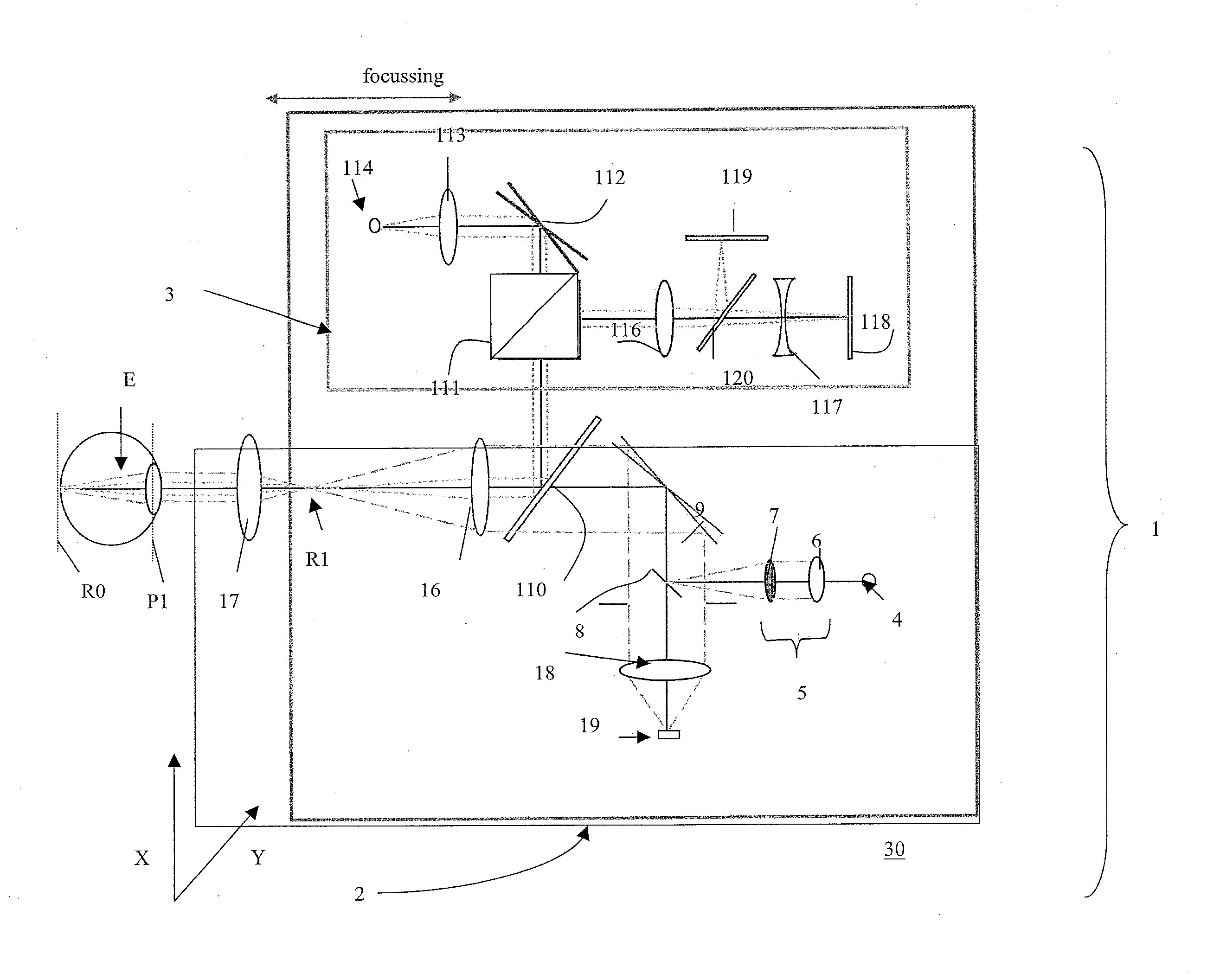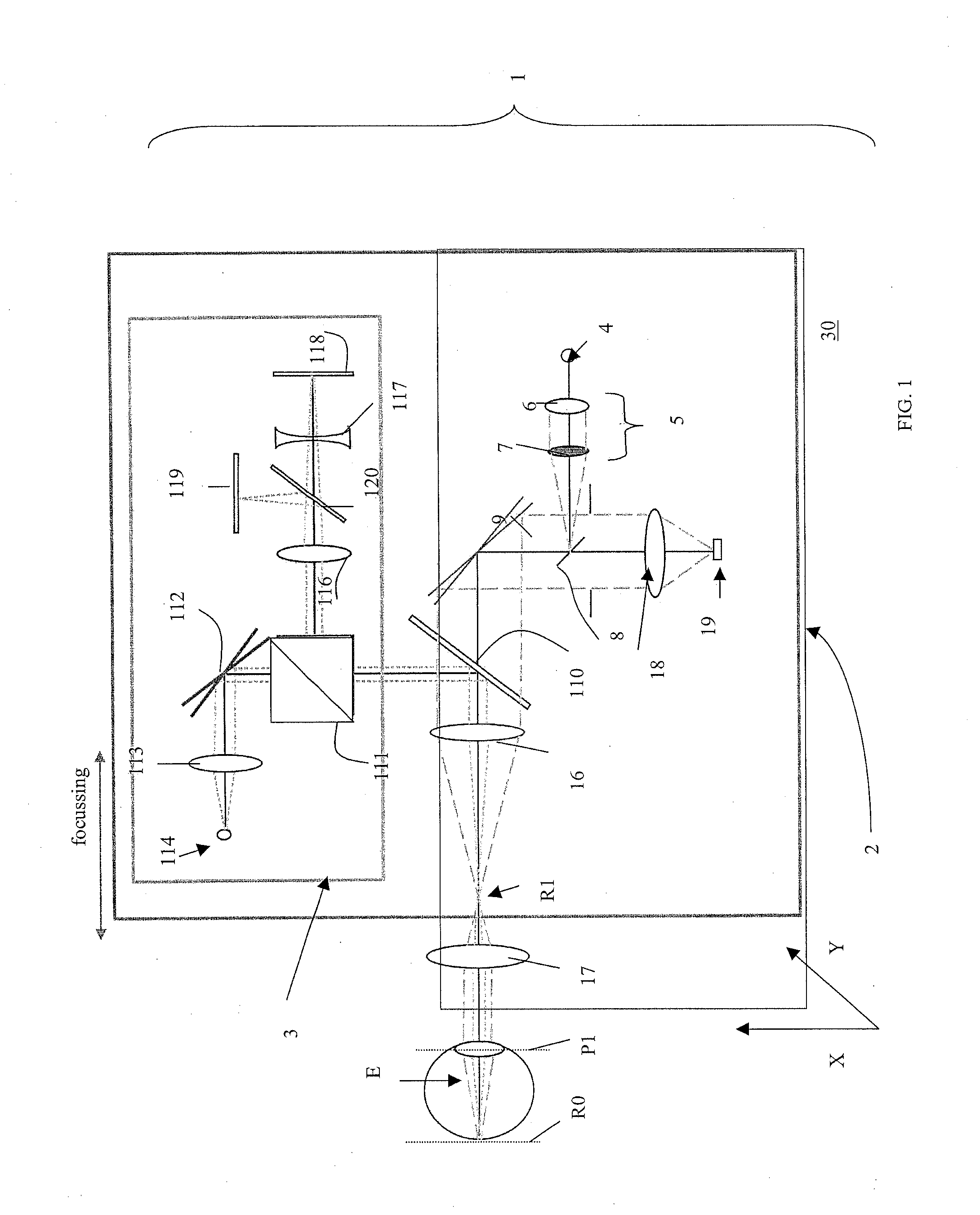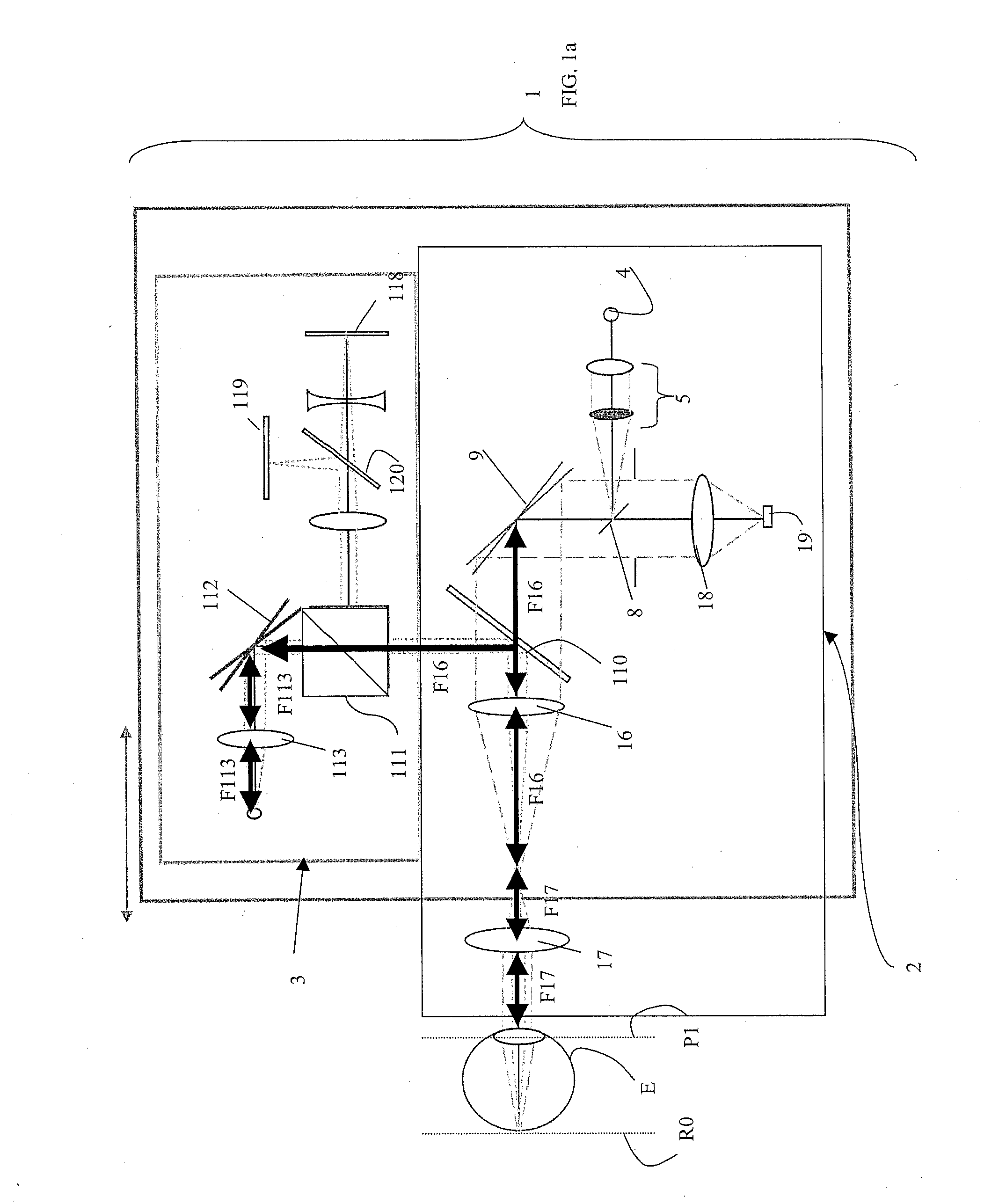Instrument for eye examination
a technology for eye examination and instruments, which is applied in the field of eye examination instruments, can solve the problem of limiting the possibility of determining their location to a discrete number, and achieve the effects of reducing the number of eye examinations
- Summary
- Abstract
- Description
- Claims
- Application Information
AI Technical Summary
Benefits of technology
Problems solved by technology
Method used
Image
Examples
Embodiment Construction
[0039]With reference to FIG. 1, 1 indicates an optical head of an instrument for eye examination according to the present invention. The instrument including the optical head 1 is used to examine an eye E of a patient, eye which is depicted only very schematically in FIG. 1.
[0040]The instrument further includes a control board 40 (shown in FIG. 6) and a software (see FIG. 7) executed in an appropriate computer 50, for the control of the optical head 1, as better outlined below. The software and the computer are also responsible of the communication with an operator of the instrument, via preferably a monitor or display 51 on which information relative to the performed test on the patient's eye or to the instrument status are shown.
[0041]The optical head 1 includes an imaging system 2 and a projection system 3, both controlled by the control board 40, computer 50 and software.
[0042]The imaging system 2, preferably a laser scanning imaging system, even more preferably a line laser sca...
PUM
 Login to View More
Login to View More Abstract
Description
Claims
Application Information
 Login to View More
Login to View More - R&D
- Intellectual Property
- Life Sciences
- Materials
- Tech Scout
- Unparalleled Data Quality
- Higher Quality Content
- 60% Fewer Hallucinations
Browse by: Latest US Patents, China's latest patents, Technical Efficacy Thesaurus, Application Domain, Technology Topic, Popular Technical Reports.
© 2025 PatSnap. All rights reserved.Legal|Privacy policy|Modern Slavery Act Transparency Statement|Sitemap|About US| Contact US: help@patsnap.com



